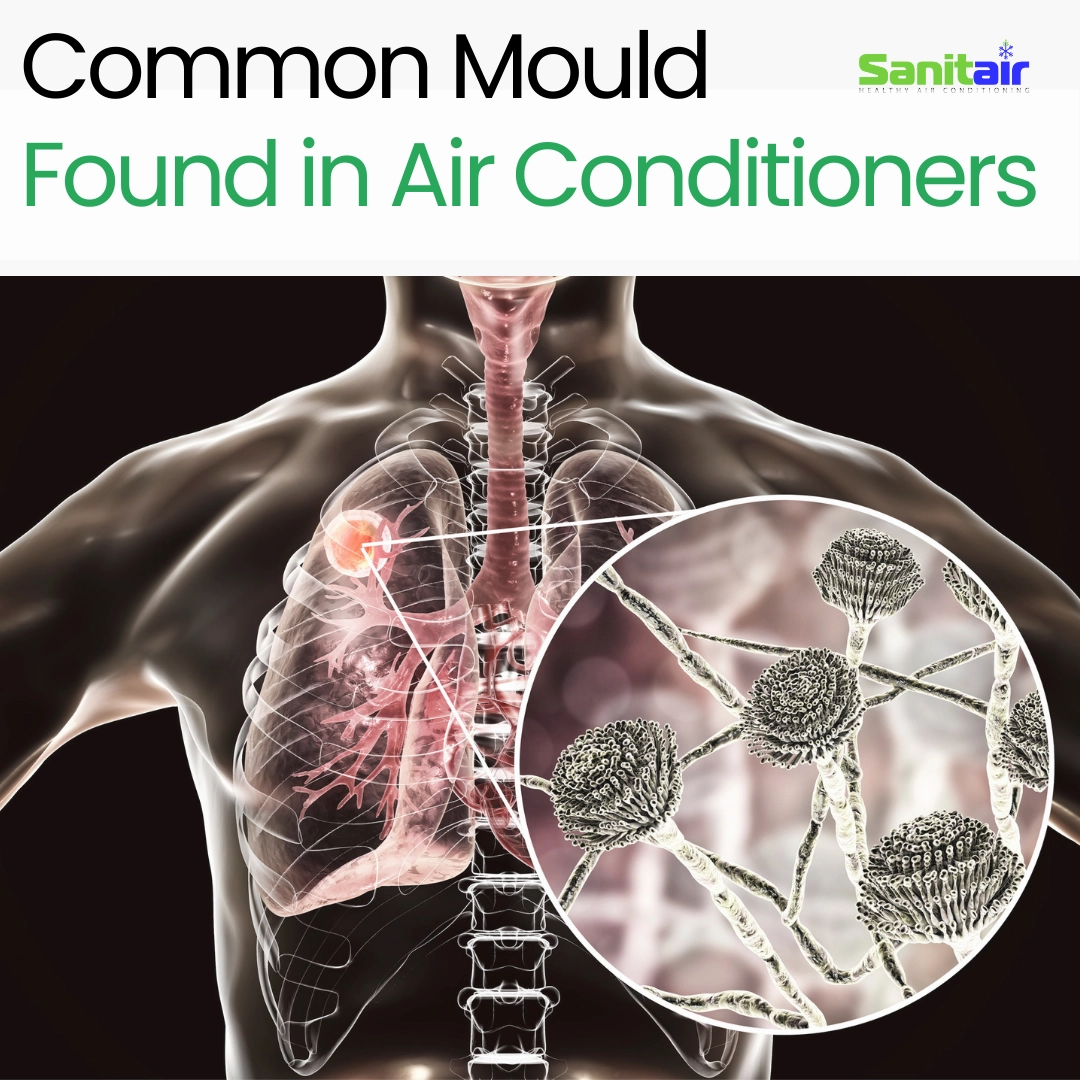
Common Mould We Find in Air Conditioning Systems
Mould is a type of fungus that can thrive both indoors and outdoors, especially in moist environments. It releases spores into the air, which can cause allergic reactions and other health problems in humans. Mould can damage property, making it a significant concern for property owners, occupants and managers. Sanitair HVAC Hygienists clean thousands of air conditioners every week and frequently discover they are contaminated with mould. The most common type we find is Aspergillus, a resilient mould which is capable of thriving in various environments.
Common Type of Mould
There are various types of mould, this is the most common mould we find in air conditioning systems:
Aspergillus
Classification: Fungi
Found in: HVAC Coils, Filters, Grilles, Scroll Fans and Diffusers
Climate: Diverse Environments; grasslands, mountain regions, high temperature
Health Risks: Mould releases spores into the air, which can cause allergic reactions and
other health problems, such as:
- Lung Infections
- Sneezing
- Congestion
- Itchy Eyes
- Rashes
- Difficulty Breathing
- Chest Tightness
- Persistent Cough
This mould is the most common airborne fungus due to growth in a wide range of temperatures. It is high aerobic; thrives in most oxygenated environments and pose multiple health risks to humans. They can grow on surfaces such as wood, paper, fabric and insulation, as well as in air conditioning systems and around water pipes.
Property Damage
Mould can lead to significant property damage. It can grow on and within surfaces and cavities, potentially causing destruction over time. Mould can also create unpleasant odours and decrease property value.
Prevention and Management
Property owners and managers should take proactive measures to prevent mould growth, including:
• Keeping areas clean and dry
• Repairing leaks or other moisture sources
• Inspecting buildings regularly for mould
• Removing any mould growth promptly
Reducing Mould Exposure at Home
To reduce mould exposure in your home:
• Use an air conditioner that has been professionally cleaned and sanitised
• Clean the air conditioner filter regularly
• Vacuum and dust frequently
• Wipe down surfaces with microfiber cloths or vinegar
• Ensure proper ventilation throughout the home
Using caustic products to clean an air conditioner or mouldy areas is ineffective and merely masks the mould. Instead, consulting a professional for annual air conditioner cleaning is recommended to ensure thorough and safe mould removal is most effective way to ensure your air conditioner is mould free.
Mould can be a serious health and property issue. Property owners and managers must take steps to prevent its growth in buildings. If you think you might be experiencing health effects from mould exposure, consult your doctor and take steps to minimise exposure in your home. For comprehensive mould remediation and to maintain clean, healthy indoor air, seek professional services regularly.
Maintaining safe indoor air quality through regular cleaning of your HVAC system reduces particle counts, alleviates breathing difficulties and prevents serious health complications for the immunocompromised. Sanitair® utilises a non-toxic product range specifically designed to safely remove mould and provide effective remediation with a 12-month mould-free guarantee. Our team has the expertise to safely eliminate serious mould-related risks within your HVAC system. For cleaner, healthier indoor air quality, contact our team today 1800 130 168 - located around Australia.
REF:
https://en.fungaleducation.org/aspergillus-spp/
https://www.ncbi.nlm.nih.gov/pmc/articles/PMC10141595/
https://www.mayoclinic.org/diseases-conditions/aspergillosis/symptoms-causes/syc-20369619

